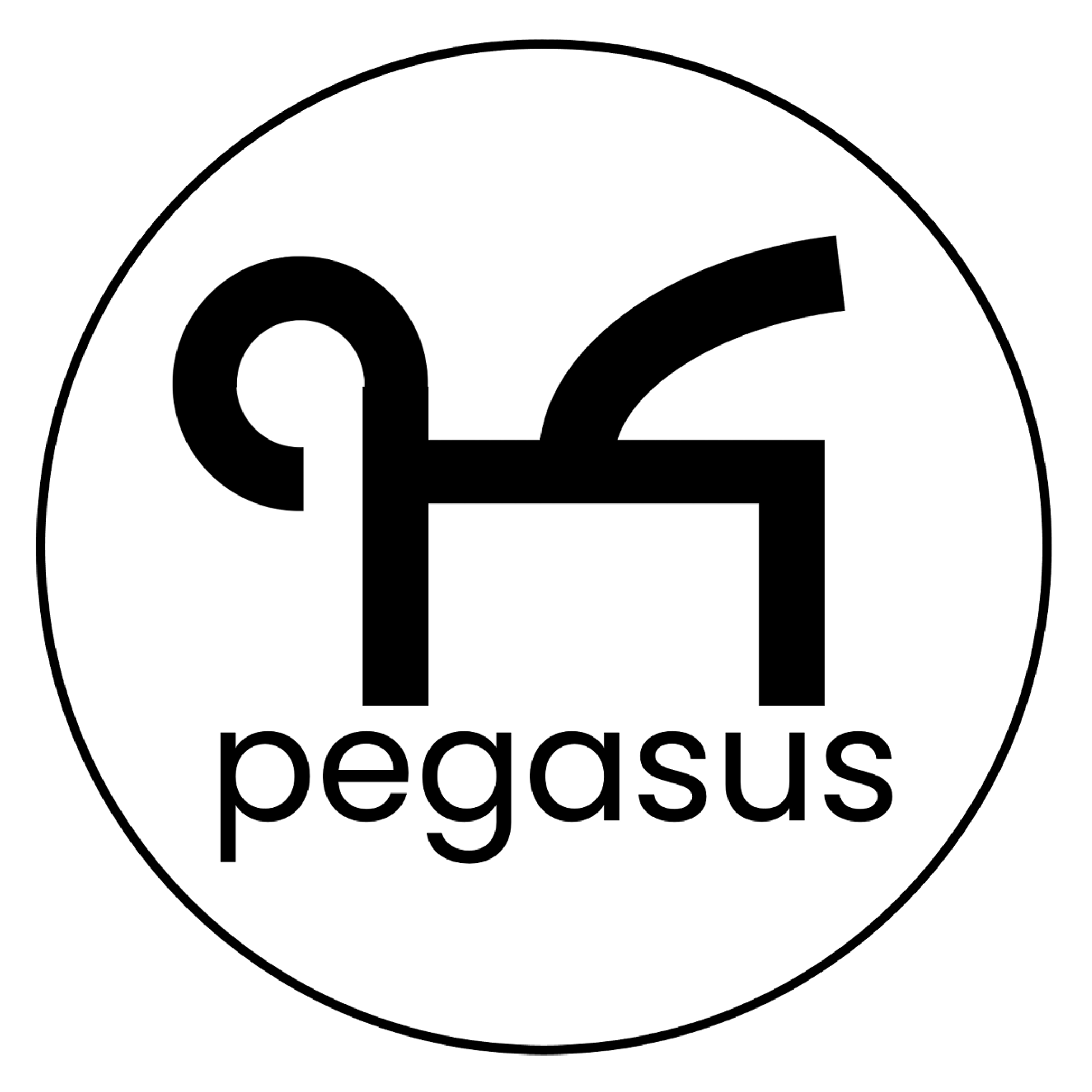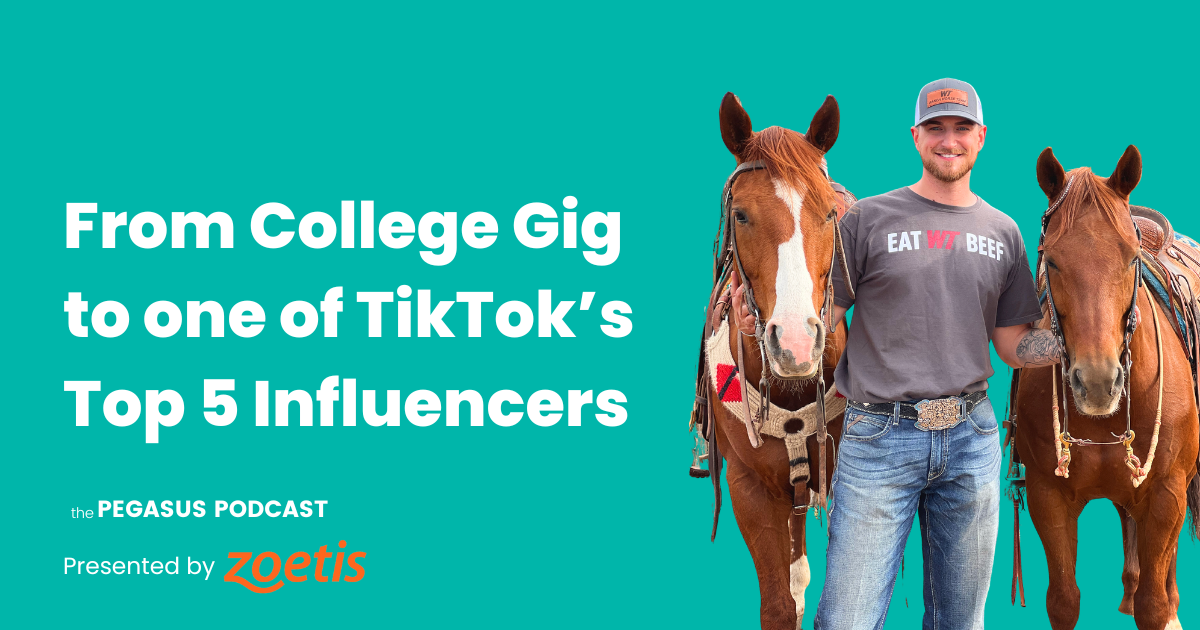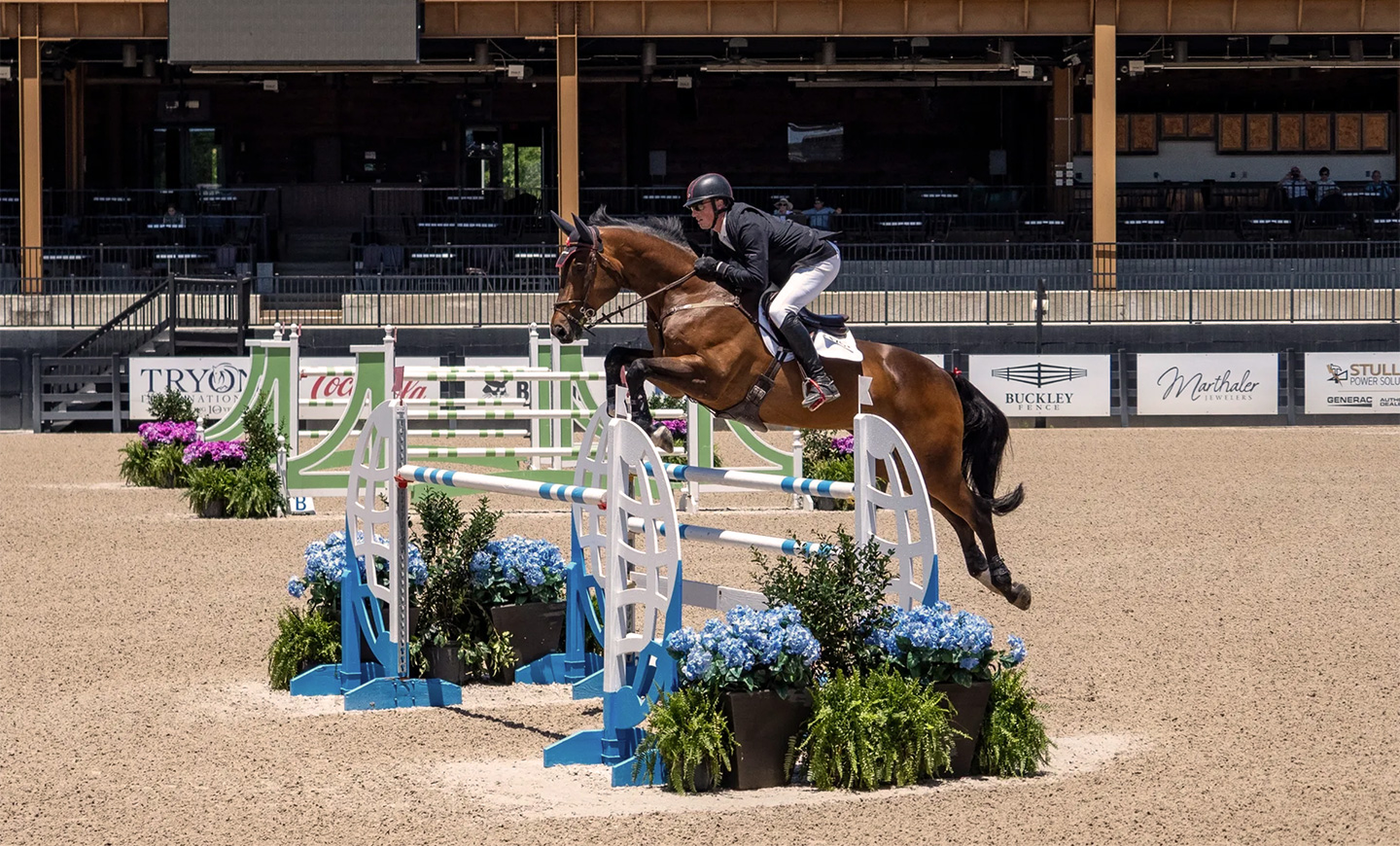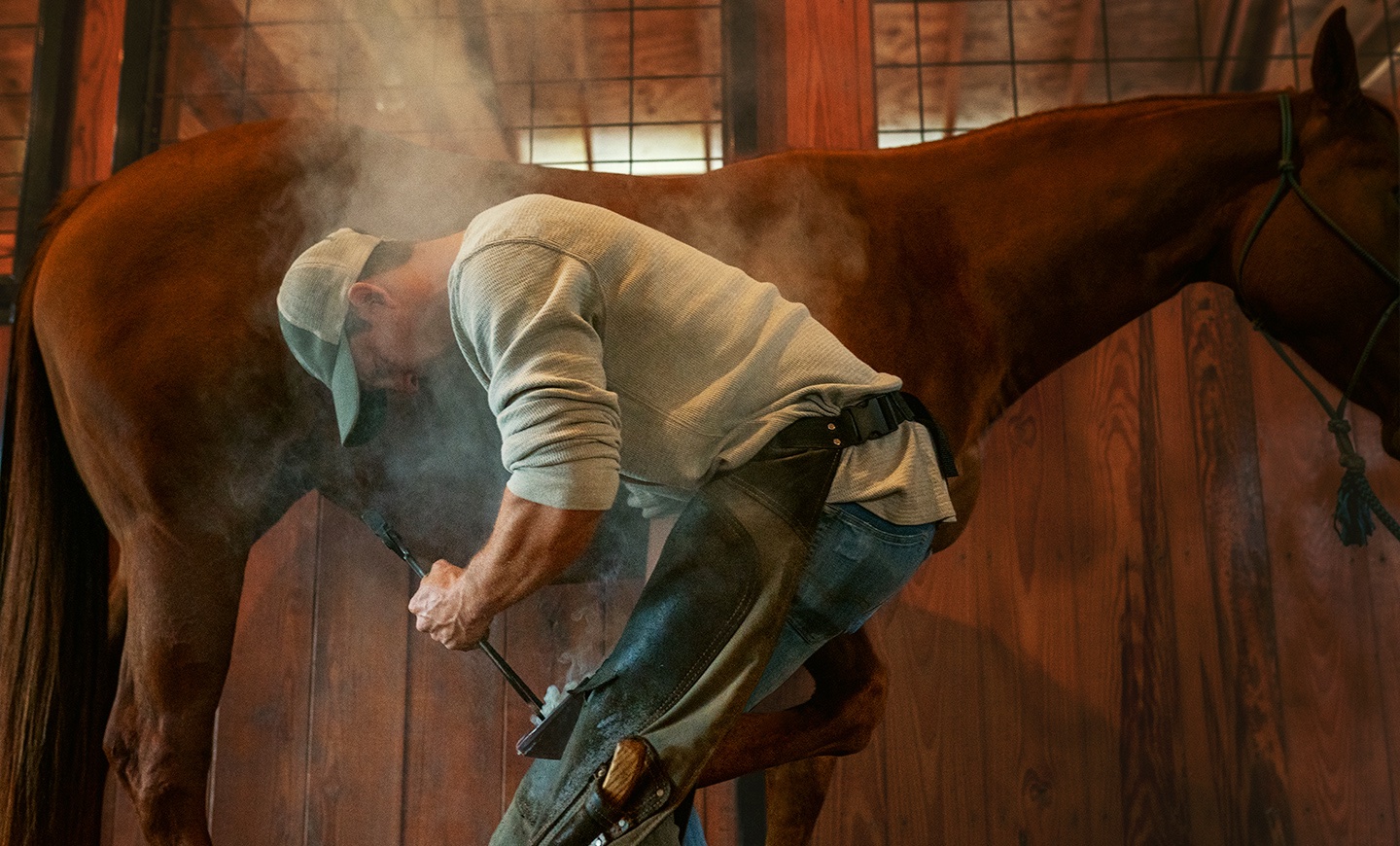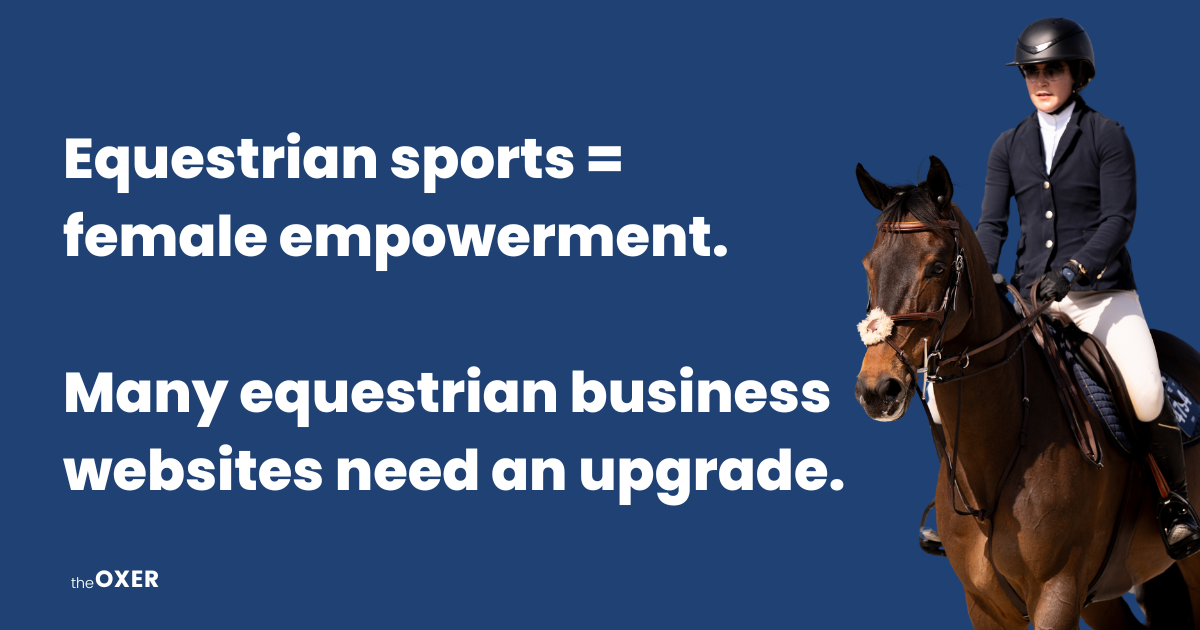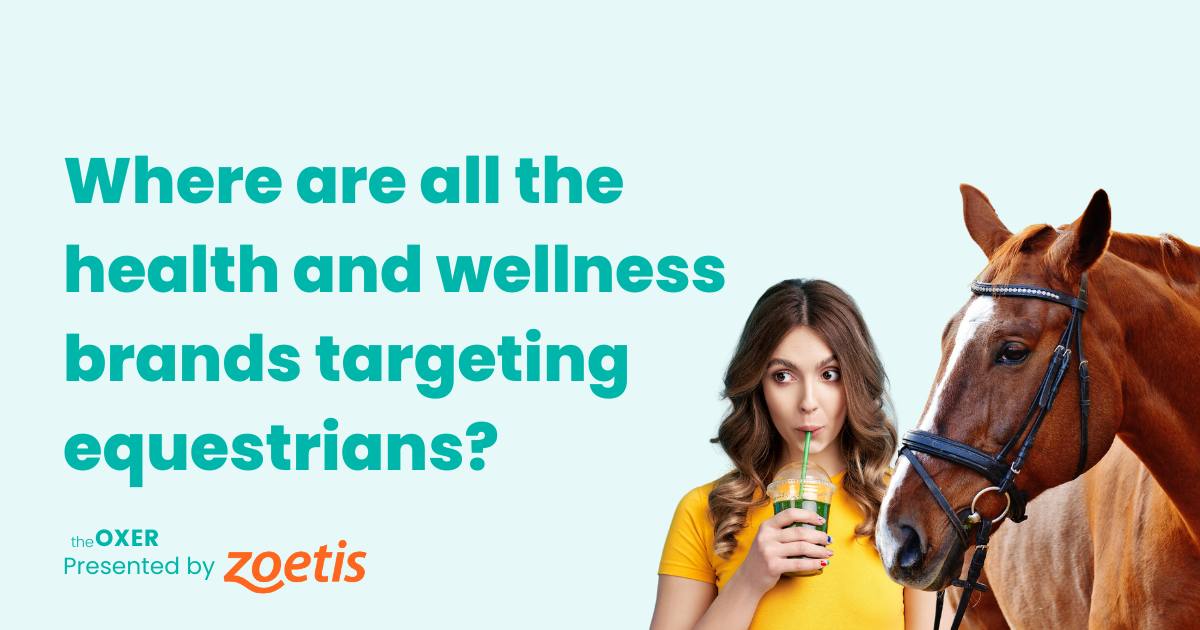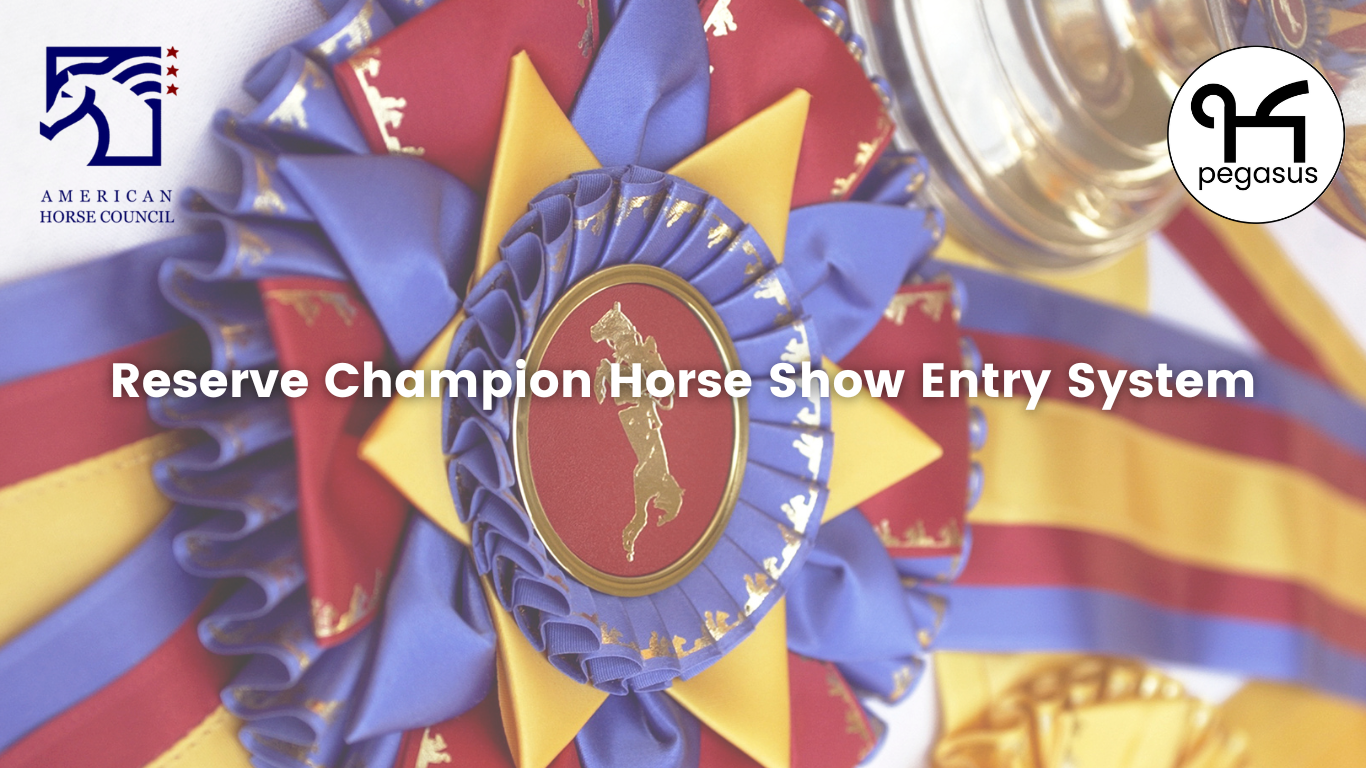Happy Monday partner, Today we’re bringing you the latest edition of The Pegasus Podcast, where we are hanging out with TikTok sensation, Nick Luciano. Nick Luciano and his horse, Diesel If Nick’s name sounds familiar, it’s probably because you’ve seen his viral Sugar Crash video on TikTok – which is the 4th most watched video on TikTok, ever. Or perhaps you’re already one of his 6 million followers and have been alongside his journey into western sports with horse Diesel – diving headfirst into horsemanship with Colton Woods and roping with Hunter Reaume. Nick Luciano at the rodeo This episode is packed with insights and inspiration for anyone passionate about western sports, content creation, and making a difference in the world. In this episode, we discuss: The story behind Nick’s video that became the 4th most-viewed video on TikTok How platforms like TikTok and Instagram are reshaping the cowboy lifestyle The complexities of media rights in the equestrian world Nick’s commitment to positivity and his entrepreneurial ventures like Luciano Western Wear The significant impact of his mental health initiative “Club Bulletproof” and the challenges he faces in maintaining an inclusive, supportive community Starting the first-ever western content creator group, Tratter House …and more! Get inspired by Nick’s innovative approach to content creation, community-building, and his resolve to revolutionize the equestrian industry through both social media and technology. Listen to this episode on Spotify, Apple, or wherever you listen to your podcasts. But before you listen… Every equestrian competitor knows, a great performance horse score requires the right balance of preparation, feel, and focus. It also requires a happy, healthy horse. Zoetis has been supporting horses, riders, and veterinarians for more than 70 years. From regenerative medicine devices like Pro-Stride® APS, to expert-recommended Quest Gel® (moxidectin), Zoetis is always by your side in the barn, down the centerline, and everywhere in between. Visit ZoetisEquine.com or follow us on Instagram and Facebook for more information on our expert-informed horse care solutions.
Caring for Elite Equine Athletes Competing on the World Stage
By Liberty Getman, DVM, DACVS, Equine Technical Services, Zoetis Do you ever think about what it takes to become an Olympian? As many of us gear up to watch the summer games in Paris, we’ll hear time and time again about athletes’ preparation—and the army of supporters who have stood behind them over the years as they ascend to the world stage. But what about horses? What does it take to care for them as they prepare for competition? Surprisingly, there are many parallels between what it truly takes to support an elite human athlete and how horses are cared for during training for equine competitions. In addition to working as an equine surgeon with a sports medicine specialty for over 17 years, I’ve trained and competed in ultra-marathon races and have seen these parallels firsthand. Ultra-marathons are races longer than a marathon (26.2 miles) and can range from 50 to 200 miles or longer. Whether a human or equine athlete, it takes diligence and the right team behind you to establish a strong training foundation to succeed. My support network includes a physical therapist who I work with several times a month, along with instructors in cross-training and yoga and nutritional guidance to help support my body through this demanding work. Horses preparing for Olympic competition have similar demands. The keys to being successful in equine or human athletic endeavors comes down to having a solid support network, nailing the simple things and being proactive. Here’s what that means. It takes a village Have you heard the saying “It takes a village”? Well, it’s also appropriate when you think about what it takes to care for a horse, especially one training for the Olympics. Ensuring a horse stays performance-ready takes a cast of valuable players, all with their own expertise and responsibilities, and all just as dedicated to your horse’s health and the competition as you are. I recently caught up with eventing Olympian Doug Payne, who competed in the 2020 Tokyo Olympics. In addition to running the world-class training center Payne Equestrian, he echoed the need for an army of strong support behind him, saying, “Being on the road for over 40 weeks of the year and managing an Olympic training schedule could not be done without a world-class team. I’ve focused on building a support system of professionals who care about the horses as much as I do, and I trust my team implicitly to ensure our horses stay healthy and are ready for showtime. That goes for everyone, from the grounds staff to the grooms, veterinarians and trainers.” Similarly, when I train for an ultra-marathon, I have a team standing behind me. On a weekly basis, it’s not unusual to have appointments with my physical therapist, converse with my nutritionist and even meet with my trainer for exercise plans beyond just running. My team is invaluable to my success on the trail to the finish line, just like the team standing behind every Olympian at the Paris Games and the one standing behind you and your horse. For the Olympian-level horse, the team behind the scenes often comprises a wide range of professionals, including: While that might seem like a lot, it’s only a few of the people responsible for making it all happen. From the groundskeeper who notices a hole in the ground, a loose fence post, or a nail sticking out of a board—to the veterinarian who administers preventative care, every team member plays a vital role in keeping a horse healthy and on track for competition. The same goes for your horse. Whether an elite equine athlete, a local hunter-jumper or an old, faithful senior horse, he could benefit from having several professionals with varying disciplines to help support his well-being. It’s quite common for a horse’s groom, farrier or massage therapist to notice when something appears off, and they can flag it for the rider, owner and, ultimately, the veterinarian to evaluate. While you may not have as big of a team as horses competing on the world stage, it still takes the dedication and care of many to ensure your horse lives a healthy and happy life. The little things add up You don’t become an elite athlete overnight. Discipline, determination and ensuring all the basics are met create the springboard for success. What’s more, it’s often the little things that have the biggest impact. When I talk to people about training for an ultra-marathon, they often ask about the long runs or intense workouts that my preparation requires. But there are more mundane things that play an equally critical role in my and any athlete’s success, including proper nutrition, high-quality and consistent rest, and getting used to the game-day atmosphere. The same goes for horses. In addition to a well-planned training regime, good nutrition, rest, quality care and preparation for the chaos of a competition are non-negotiable for a horse to be healthy and succeed at high-level competition. “Ultimately, horses’ comfort level on the road plays a major role in their success. We work a lot on desensitizing our horses to novel environments at home by making our training environment as exciting as we can to mimic the intensity of the event atmosphere. We plan to finish up in the barn by 4 p.m. to ensure the horses get plenty of rest with peace and quiet during otherwise hectic periods of time. We also bring our own grain and ensure the highest quality hay when we travel to ensure proper nutrition and keep the horses’ routine as similar as we can to what they experience at home,” said Payne. When it comes to nutrition, be sure to evaluate your horse’s diet and start with simple, high-quality forage and grain. In both human and horse training, there’s often a temptation to focus our efforts on adding supplement after supplement, without tending to the underlying diet. But no amount of supplements can counteract poor nutrition. The same goes for exercise and rest. Exercising
The Ultimate Guide to Planning a Successful Horse Show
Welcome to the exciting world of horse show organization! Whether you’re a riding instructor, barn owner, manager, or club member, running a horse show can be a rewarding endeavor. Here at Pegasus, we’ve gathered tips and insights to help you host a successful event. Step 1: Early Preparations (18 Months to 1 Year Ahead) Step 2: Mid-Term Preparations (1 Year to 6 Months Ahead) Step 3: Near-Term Preparations (5 Months to 2 Weeks Ahead) Step 4: Final Preparations (2 Weeks to Day Before) Show Day Checklist Post-Show Activities Organizing the Competition Deciding the type of competition, selecting the date, choosing a location, assembling an organizing team, and setting a budget are critical steps. Different disciplines like Hunter, Jumper, Dressage, and Western Pleasure offer various competition styles. Consider the popularity of the discipline in your area, any mileage rules from the governing bodies, and ensure your facilities meet the requirements. Health, Safety, and Ethics Ensuring the health and safety of participants and maintaining ethical standards are paramount. Require health papers for all horses, promote the use of protective equipment, and have emergency medical plans in place. A code of conduct for participants can help maintain a positive atmosphere. Show Personnel A successful show relies on a dedicated team, including volunteers and paid staff. Key roles include the Show Manager, Secretary, Judge, Announcer, Ringmaster, and Emergency Medical Technician. Clear job definitions and proper training are essential. Class List Creation Creating a comprehensive class list is crucial. Consider the types of classes, divisions, and the order of events. Ensure your class list includes all necessary information such as rules, regulations, and entry details. Publish these details on Pegasus as you gather them, so that exhibitors have plenty of time to prepare. Promoting Your Show Effective promotion is key to attracting participants and spectators. Use a combination of press releases, flyers, social media, and word-of-mouth to publicize your event. Integrating Technology for Entry and Management Incorporating an advanced entry and management system can significantly streamline your horse show operations. Pegasus’s event management software offers features like online registrations, paperwork, scheduling, and automated communications, making the entire process more efficient and less stressful. Organizing a horse show is a complex but rewarding task. With careful planning, attention to detail, and a dedicated team, you can host a successful event that participants will look forward to year after year. Utilizing modern tools like Pegasus can streamline every step, ensuring your event is a resounding success. For more detailed guidance and resources, visit Pegasus.
Streamlining Online Horse Show Entries with Equestrian Technology
Horse Show Entries: Technology Innovation in 2024 Horse show entries have traditionally been managed through manual paperwork and in-person submissions. In recent years, however, there has been a notable shift towards leveraging technology to streamline the entry process. The need for modern online platforms and digital solutions has revolutionized the equestrian event industry, making it more efficient and accessibly for both organizers and riders. What are the latest advancements in technology for horse show entries? How has online entry processes revolutionized the equestrian event industry? Online entry processes have transformed the way horse show entries are submitted and managed. Equestrians can now complete entry forms, provide necessary information, and even make payments through online platforms. This eliminates the need for physical paperwork and reduces the time required to process entries. This digital transformation has significantly enhanced the convenience and accessibility of participating in horse shows. What are the benefits of using technology to streamline the entry process? Utilizing modern technology in the entry process offers a lot of benefits. This includes: Additionally, digital platforms can offer features such as automated push-notifications and reminders, contributing to a smoother and more organized entry process. Are there any new platforms for submitting horse show entries? A new online platform specifically designed for submitting horse show entries has emerged – offering a user-friendly interface and tailored features to cater to events of all disciplines and sizes. This includes both clinics and horse shows. The platform, Pegasus, simplifies the entry process, provides comprehensive event information, and facilitates seamless communication between organizers and exhibitors. It’s the only technology on the market to offer both a desktop platform and a mobile app. The enhanced experience of managing and submitting entries to horse shows and clinics has been profound. What are the key features of a modernized entry management system? A modernized entry management system should have features designed to streamline and optimize the entry process. These may include customizable entry forms, integrated payment processing, real-time entry tracking, and secure data storage. Such systems are tailored to meet the specific needs of horse shows, offering organizers and participants a user friendly platform for managing all aspects of their show entries. Customer support and a full-time, dedicated team to assist both the organizer and the exhibitor is also incredibly important. Horse shows are live events, and an entry system isn’t something to be outsourced or done part-time. It’s important when assessing features to also assess the builders of the features. Are there any concerns or challenges associated with technology adoption for equestrian events? While the integration of technology has brought about numerous benefits, there are also concerns and challenges associated with its adoption within equestrian events. Some stakeholders may experience initial resistance to technological changes, There could also be issues related to data security, especially if an engineering team is outsourced to a development agency overseas. User experience, and platform reliability is key – it is important that an organizer assesses the competency of the engineering team to ensure customer support and user satisfaction are met for their exhibitors. How can horse show participants benefit from technological innovations in entry processes? What advantages do equestrians gain from using online platforms for show entries? Equestrians stand to gain various advantages with the use of a great online show entry system. Riders are at ease when they can leverage a streamlined entry submission, get immediate confirmation of entries, and access all of the event information. Additionally, the integration of digital tools enriches the overall participant experience by enhancing communication, simplifying entry management, and providing greater flexibility in participating in a diverse range of equestrian events. Technology makes for a seamless and enjoyable experience for all involved: intuitive entry workflows, personalized event recommendations, and efficient communication channels. By effortlessly registering, staying informed about upcoming events, and engaging with the equestrian community, innovation in the industry helps create a more dynamic and fulfilling experience for all involved. To put on your next horse show using the latest technology, head to Pegasus or book a demo to learn more.
Show-Stopping Biosecurity with Dr. Holly Helbig
Happy Monday partner, On today’s edition of The Pegasus Podcast, we are interviewing Dr. Holly Helbig from Zoetis, where we discuss all things equine health. This episode is packed with valuable insights and actionable tips for every horse owner, especially those involved in horse shows. In this episode, we discuss: Career Transition and Passion: Dr. Holly Helbig transitioned from a wedding planner to an equine veterinarian, driven by her passion for horses and veterinary medicine. Veterinary Practice and Resilience: Leveraging her diverse background in corporate work and horse training, Dr. Helbig started her own veterinary practice right out of vet school. Equine Influenza Outbreak Management: Dr. Helbig shares her experience managing an equine influenza outbreak at a 2019 horse show, highlighting the importance of quarantine, testing, and transparent communication. This incident underscored the need for standardized procedures and proactive communication in managing disease outbreaks at equine events. Biosecurity and Vaccination: Emphasizing the importance of disease prevention, Dr. Helbig advocates for proper vaccination of horses before events. Practical biosecurity measures include daily temperature checks, disinfecting stalls, and using separate equipment for different horses. Veterinary Expertise and Practical Tips: As the head veterinarian at major equestrian shows and her dual perspective as a rider and veterinarian provide her with unique insights. She offers practical advice on managing equine health, emphasizing proactive measures and biosecurity practices to prevent disease transmission, and discusses the AAEP’s categorization of core and risk-based diseases for better disease management. …and more! Listen to this episode on Spotify, Apple, or wherever you listen to your podcasts. Before you listen… Every equestrian competitor knows a great performance horse score requires the right balance of preparation, feel and focus. It also requires a happy, healthy horse. Zoetis has been supporting horses, riders and veterinarians for more than 70 years. From Core EQ Innovator® and Fluvac Innovator® EHV-4/1 —vaccines that can be administered by your horses’ veterinarian—to a stall-side testing kit called Stablelab® that your vet can use to measure Serum Amyloid A levels in less than 10 minutes. Be sure to Visit ZoetisEquine.com or follow @Zoetis Equine on Facebook and Instagram to learn more.
Tips to Prepare for Successful Hoof Care Visits
Diego Almeida, CJF, EE, FE, TE, AWCF Your horse’s care team is one you’ve likely built through trusted referrals and research between trimming or shoeing appointments, veterinarian visits, day-to-day feeding, care and more. And when it comes to your horse’s hoof care, farriers are your foot health and functionality experts. A horse’s hoof is so much more than just the keratin-based hoof wall, sole and frog we see on the outside—it’s a true foot, with a complex inner structure of bones, tendons, ligaments, nerves and vasculature. Without regular, professional hoof care, we have “no horse,” as the saying goes. In addition to providing regular hoof maintenance, farriers also collaborate with veterinarians on lameness and other foot health problems to make strategic trimming and shoeing choices that support their treatment plans. Common conditions that veterinarians and farriers collaborate on include: As program director at a university-based farrier school, as well as in my private practice, I get the chance to work with both horse owners and veterinarians in a variety of hoof care situations. I believe the following key tips can help horse owners prepare for successful hoof care appointments. Horsemanship is key to farrier safety To be ready for a farrier appointment, horses must learn the skill of standing quietly when held and when tied. Groundwork and preparatory foot handling by someone experienced in horse training is incredibly important—ideally when your horse is still young—but it’s relevant for adult horses too. Recognize that farriers aren’t horse trainers, and any time spent getting your horse to be cooperative and safe for hoof handling may put their safety at risk. It’s crucial to understand that in addition to safety considerations, anytime hoof care professionals are asked to work on a horse that’s moving around, resisting, reacting, spooking or exhibiting other challenging behaviors, they won’t be able to perform their best trimming and shoeing work. Additionally, extra appointment time will likely put farriers behind schedule for the rest of the day, and they may even lose expected compensation. Below are several handling tips to help prepare your horse for hoof care appointments: Hoof care appointments can feel long and intense for horses standing on three feet for extended periods of time, especially older horses, those with soundness issues and those that are out of work and unfit. For example, imagine a human with a comparable challenge going to their first yoga class and being asked to hold a pose that their body isn’t used to. It could result in loss of balance, fatigue and frustration. Consider these ways you can support your horse’s stamina during hoof care visits: Your horse’s head position also plays a significant role in how smoothly your farrier appointment will go. Here are several handling tips: If your horse has been stalled before the appointment, exercise him before the farrier arrives if you can safely do so. Even hand-walking or simple groundwork can help stretch your horse’s legs and use his mind, which can help him stand more quietly during his hoof care visit. Importantly, if your horse is turned out, have him caught and ready when your farrier arrives. Provide a safe farrier work space A farrier’s working environment is another crucial factor to prepare for. First, ensure that the work area is spacious and remove clutter to allow your hoof care professional to get out of the way if a horse moves or reacts unexpectedly. Avoid feeding horses or turning other horses out that are near the horse being worked on. Remove dogs and other barn animals from the space along with anything that could be distracting to your horse. Additionally, avoid moving equipment or doing anything that might cause a spook, and ask your farrier first if you need to walk another horse by the horse they’re currently underneath. Develop open lines of communication The best working relationships are built on trusted lines of communication between horse owners, veterinarians and farriers. Each of us observes different nuances of a horse’s behavior that help complete a fuller picture of what care he may need. Here are a few examples of how healthy, respectful communication benefits horses and everyone involved in the care team: Options to consider if your horse requires sedation Finally, if your horse’s behavior could potentially be unsafe, it’s appropriate for your farrier to suggest that you contact your veterinarian to discuss sedation options. Farriers understand that not all horses behave the same, and some horses are still growing and learning. However, our safety is our livelihood. The more that horse owners can help prepare horses to be confident and safe when receiving professional hoof care, the better job farriers can do to support his/or her foundation, performance and well-being with their best trimming and shoeing work. For additional hoof health insights, read the following blog: “Factors that affect your horse’s hoof growth and quality.” About the author: Diego Almeida is the program director for Montana State University Farrier School in Bozeman. He’s a certified journeyman farrier and the first to achieve all three advanced endorsements—Educator, Forging and Therapeutic—offered by the American Farrier’s Association (AFA). He heads the AFA’s Educator Endorsement Committee and is an AFA tester and certification instructor, supporting the development of other farriers in the U.S. and abroad. In 2019 Dr. Almeida achieved his Associate of the Worshipful Company of Farriers in England, and he’s a past winner of the International Hoof-Care Summit’s Rising Star Award and a three-time recipient of the AFA’s J. Scott Simpson Outstanding Educator Award. IMPORTANT SAFETY INFORMATION Do not use DORMOSEDAN GEL in horses with pre-existing atrioventricular (AV) or sinoatrial (SA) block, with severe coronary insufficiency, cerebrovascular disease, respiratory disease, or chronic renal failure. Do not use in anesthetized or sedated horses, or in conditions of shock, severe debilitation. See full Prescribing Information. Do not use DORMOSEDAN STERILE SOLUTION in horses with pre-existing atrioventricular (AV) or sinoatrial (SA) block, with severe coronary insufficiency, cerebrovascular disease, respiratory disease, or chronic renal failure. Intravenous potentiated sulfonamides should not be used in anesthetized or sedated horses. Careful consideration should be given
Equestrian Sports are the Greatest Demonstration of Female Empowerment
Hey there, partner. This is The Oxer by Pegasus. The newsletter that takes you out of your tack room and into the global equestrian industry. 🐴 Here’s what we’ve got for you today: 💪 The equestrian industry is the epitome of female empowerment. Name a more labor intensive, dangerous, logistically-challenging sport that is managed and dominated by women… we’ll wait. 💻 Hot take: Many equestrian business websites are in need of an upgrade. But look, it’s not their fault! 🎬 Final Foals: Check them out at the end of this edition. Before we jump into it, are you an event organizer looking to host your next clinic or horse show? Pegasus is the first modern horse show entry system that makes it easy to run an event from start to finish. You can accept online entry registrations, receive digital signatures for your event paperwork, as well as manage the logistics, scoring, and scheduling of your event (serving both English and Western!) Run better horse shows with the Pegasus Event Management System at www.thepegasus.app. Pegasus Rider and Professional Show Jumper Gabriela Reutter getting ready to compete in Wellington, Florida. Photo: Katerina Sciuto With that female dominance – consider this: It’s labor-intensive: You have to be up before dawn and are often in bed after dusk. Oh, and there are no days off – rain, hail or snow. Horses are living, breathing animals – you can’t just park them in the garage on a bad day. It’s full-time commitment: “I’ll just be at the barn for an hour or two” is one of our favorite lies we tell ourselves. And that’s ok, we love it there. If you know a horse person, you will know they spend every spare minute out at the barn. And often, the barn is not nearby… it can be a solid hour to get out to the countryside. It’s unpredictable: You are riding an animal with a mind of its own, at speed, while jumping through the air. S*** happens! When Three Day Eventers competes in the Olympics, they compete at a 4 Star Level. Not 5 Stars which is the top level. Why? One of the reasons is that the insurance agencies won’t underwrite the top level because it’s too dangerous. It’s logistically complex: Many horse shows have over 2,000 competitors. That is at least 2,000 horses. Some venues can have over 100,000 horses! For those of us who work corporate jobs – can you imagine planning and managing the logistics of this many horses? And they don’t just need to get there – they need to be moved around the horse park to a schedule. Pegasus Rider and Professional Show Jumper Gabriela Reutter getting ready to compete in Wellington, Florida. Photo: Katerina Sciuto It’s injury-prone: riders and rehabilitation… sigh. Been there, mended that. But as our trainers always tell us: when you fall off, you get back on. It’s the true meaning of resilience: You might be doing everything right but your horse just happened to get a little too silly in the pasture with his mates and there you have it – a season-ending injury topped with a couple thousands over to the vet. So begins the stall rest.. equestrian sports may have the greatest Achilles heel! The list could go on… Our point is – this is a very dangerous, very time-consuming, complex environment and sport where the repercussions can be life-threatening injuries. …And it is pretty much all run by women. Why isn’t it on the world’s pedal stool for female empowerment? Many Equestrian Business Websites are in Need of an Upgrade Have you seen this meme? Yes, we too owned those shoes. And we also love our night serum. Which brings us to our point, expressed with love: if you built your website in 1999, it is time to upgrade it. We get that designs and trends change and that’s not on the equestrian industry to keep tabs on. I mean – look at our last story – managing complex shows and dangerous horses and mucking stalls from dusk to dawn AND a demand to have a pretty website? There aren’t enough hours in the day. But hear us out: it’s an investment for your business. In this day and age, you have to have a website. And ideally it would be impactful with up-to-date information. Here’s a typical case study we heard from a few equestrian businesses: They jumped on Google years ago and found a web design agency and paid them to build a site. The site quickly looked outdated and was prone to fall into disrepair. The hypothesis? A small budget for the website meant they were a lower-tiered customer in the eyes of the agency. The design agency may not have treated them as an important customer and thus built the bare minimum. Building websites were harder back then than they are now. But that’s not the worst part. The worst part is that many equestrian businesses aren’t aware of the fact that such a site has to be maintained. And since they outsourced the build, they now have to pay the web design agency every time they want to update their site. So they don’t update it. They just leave it be and accept it as-is. And that just may be why the internet is populated with lots of aging equestrian sites with outdated information. The alternative is to skip the website and build your business on a platform like Facebook – which many of course do. It’s cheaper than going the agency route and faster than learning to spin up a Wix site. They can update it themselves and keep current. BUT – that forces them to accept the risk that Facebook may ban their profile at any point, and overnight their business is shut down (like we talked about last week on The Oxer). All of this to say – we are optimistic this may become a thing of the past with the
Equestrians Want to Buy Your Electrolyte Salts, Too
Hey there, partner. This is The Oxer by Pegasus. The newsletter that takes you out of your tack room and into the global equestrian industry. 🐴 Here’s what we’ve got for you today: 🥑 Where are all the health + wellness brands? We’ll cut to the punch line – equestrians need your electrolyte salts and green supplements too. 📲 Facebook: The equestrian industry’s BFF + worst enemy. We’ve all heard tales of lost businesses. Come on, Zuck, pick up your phone and help them out. 🩺 From the experts at Zoetis: Biosecurity & Fly Control Tips From an Equine Veterinarian. 🎬 Final Foals: Check them out at the end of this edition. Before we jump into it, are you an event organizer looking to host your next clinic or horse show? Pegasus is the first modern horse show entry system that makes it easy to run an event from start to finish. You can accept online entry registrations, receive digital signatures for your event paperwork, as well as manage the logistics, scoring, and scheduling of your event. Run better horse shows with the Pegasus Event Management System at www.thepegasus.app. Where are all the Health + Wellness Brands Targeting Equestrians? The equestrian market is 95% women, who engage in physical work in harsh outdoor conditions. So where are all the health and energy brands? The equestrian market is underdeveloped. Let’s break down the opportunity: Who are the customers? Horseback riders – there are a LOT of them. We’re talking in the tens of millions. They’re 95% women in English riding and about 50% women in western riding. They all engage in a physically demanding activity on a daily basis. Since this physical activity occurs outside, they’re exposed to the elements. They can compete for decades, unlike most other sports where you eventually age out. And alas, they spend money. Especially if it gives them a competitive edge in the ring. So what is the opportunity? Physical training: riders need to keep themself in shape and recover from injuries. Health supplements: for both riders and horses – to stay healthy to compete. Sustenance: riding outside for hours in the summer heat requires the need for energy and electrolytes. Apparel: riders wear similar things – you don’t need that many SKUs if you are an apparel company. Here’s what companies should take note of: Fitness influencers: sell an online training package optimized for equestrian fitness. Health supplements: Think Athletic Greens – riders would embrace daily greens on their way to the barn each morning. Athletic Greens billboard featuring a swimmer Sustenance: DrinkLMNT, Liquid I.V… it’s hot out there, and riders need salts. Apparel, such as Lululemon. Many riders wear athleisure while riding or doing barn chores. It makes sense: they’re comfortable, they’re breathable, and they’re stretchy. Why don’t athletic brands lean in and really start to advertise to the space? Professional Show Jumper Dani Goldstein-Waldman wearing yoga pants. Source: Sportfot When it comes to marketing, the more niched down the demographic is, the better. It makes it easier to write ads, position them, and distribute them. The equestrian industry is one of the most pure demographics out there, and it’s untapped and global. BRB, off to start a Shopify store… or maybe we already have? Biosecurity & Fly Control Tips From an Equine Veterinarian Do you plan to travel with your horse(s) this spring and summer? Dr. Holly J. Helbig, equine technical services veterinarian, Zoetis, has tips to help prevent the spread of infectious equine diseases. It’s also a key time of year to think about preventative fly control measures to help prevent summer sores. Facebook: The Equestrian Industry’s BFF + Worst Enemy The majority of businesses in the equestrian space are small services businesses like training barns, boarding barns and horse sales agents. There is a real world aspect to their business that anchors them to a geographic location, and limits the area to source new business from. This is why Facebook is, for most equestrian businesses, their best friend. Facebook groups that serve a particular region generate a sales channel through which all these service-type businesses can source new clients. For example, the group Atlanta Equestrians is a great place for trainers and boarding barns to connect directly with equestrians in the Atlanta area. Seems obvious, right? Where Facebook becomes the enemy is its policies. As a platform designed to help all, it must create polices that pertain to all. And so content that results in the sale of animals is taken down and often the account involved is blocked – if not deleted all together – a policy designed to prevent illegal trafficking of animals. Very often, however, accounts are banned for breaking the rules for related behavior – such as selling horses. And famously, there is no help line for Facebook. Judgements are rarely overturned, and if they are, it takes months. If you can get Mark Zuckerberg on the phone, do let us know. So if equestrians build their business on top of Facebook, they run the risk of a moderator banning their account – and their business, customers, communications channels, content, etc. are all wiped out overnight. And there is no recourse. They have to build up their audience from scratch. So what’s the point? Equestrians need an alternative. They need a ‘safe-space’ (dare I use that term) to conduct their business that won’t lump them in with animal trafficking businesses. If this resonates with you, you’ll probably like the new Pegasus vendor and sponsor features dropping next quarter. 🐴 This Week’s Final Foals 🤠 This new report shows that the equine industry contributes $12.3 billion to the Texas economy. Could there be the first-ever all-female Olympic show jumping team? 👯♀️ TikTok trend, but make it equestrian. These horses are Pegasus-paid actors. Every equestrian competitor knows, a great performance horse score requires the right balance of preparation, feel, and focus. It also requires a happy, healthy horse. Zoetis has been supporting horses, riders, and veterinarians for
Pegasus Named “Reserve Champion” Horse Show Entry System at American Horse Council Conference
FOR IMMEDIATE RELEASE Washington, D.C. – June 12, 2024 – Pegasus, the leading innovator in equestrian technology, is proud to announce that their event management system has been honored with the “Reserve Champion” title at the prestigious American Horse Council (AHC) 2024 National Issues Forum and United Horse Coalition Annual Meeting. This accolade recognizes Pegasus’s exceptional contributions to the equestrian industry, further solidifying its position as a pioneer in equestrian event management solutions. The Annual Conference, hosted by the American Horse Council, is a highly esteemed event in the equestrian community and took place June 9-12 in Washington, D.C. The AHC represents all segments of the horse industry, advocating for the health and well-being of horses, and promoting the interests of the equestrian community. The conference brings together industry leaders, professionals, and enthusiasts to celebrate and discuss advancements, trends, and issues within the equine world. Being named “Reserve Champion” is a significant achievement, highlighting Pegasus’s commitment to excellence and innovation. “We are thrilled and honored to receive the ‘Reserve Champion’ title at this year’s American Horse Council Annual Conference, announced by The Tech Equestrian” said Sam Baynes, CEO and Co-Founder of Pegasus. “Having launched our technology only a few months ago, this recognition is a testament to the hard work and dedication of our team, who strive to push the boundaries of equestrian event management technology and provide our clients with the best possible software and customer service.” Pegasus has revolutionized the equestrian industry with its state-of-the-art event management system, offering features such as online registration, scheduling, scoring, and result tracking for both English and Western horse shows and clinics. By integrating advanced technology with a deep understanding of the needs of event organizers, competitors, and sponsors, Pegasus has set new standards in the industry, enhancing the overall equestrian event experience. The “Reserve Champion” title is awarded to companies that demonstrate outstanding achievements in innovation, customer satisfaction, and industry impact. Pegasus’s innovative and unwavering commitment to advancing equestrian sports have made it a standout in the field. As Pegasus continues to lead the way in advancing the equestrian industry, the company remains dedicated to its core values of innovation, quality, and customer-centricity. This latest accolade serves as a reminder of the company’s ongoing mission to transform the horse show experience through technology. About the American Horse Council: The American Horse Council (AHC) is a non-profit organization that advocates for the health and well-being of horses and the equestrian community in the United States. The AHC represents all segments of the horse industry, providing a unified voice in Washington, D.C., and working to advance the interests of the equine community through education, legislation, and industry collaboration. About Pegasus: At Pegasus, we’re on a mission to revolutionize the equestrian world. Founded in 2020, we’re a pioneering technology company dedicated to delivering exceptional innovation to the equestrian community. By streamlining automation, compliance and creating new revenue opportunities, we empower horse and rider, and ignite growth and prosperity in the industry. Together, we’re shaping the future of horse sport, with accessibility, integrity, and enjoyment at the forefront of our vision. To sign up to use the Pegasus Event Management System, head to www.thepegasus.app For more information, please contact: Jen Tankel, Co-Founder hello@thepegasus.app
Tips to Prepare For Successful Hoof Care Visits
Diego Almeida, CJF, EE, FE, TE, AWCF Your horse’s care team is one you’ve likely built through trusted referrals and research between trimming or shoeing appointments, veterinarian visits, day-to-day feeding, care and more. And when it comes to your horse’s hoof care, farriers are your foot health and functionality experts. A horse’s hoof is so much more than just the keratin-based hoof wall, sole and frog we see on the outside—it’s a true foot, with a complex inner structure of bones, tendons, ligaments, nerves and vasculature. Without regular, professional hoof care, we have “no horse,” as the saying goes. In addition to providing regular hoof maintenance, farriers also collaborate with veterinarians on lameness and other foot health problems to make strategic trimming and shoeing choices that support their treatment plans. Common conditions that veterinarians and farriers collaborate on include: As program director at a university-based farrier school, as well as in my private practice, I get the chance to work with both horse owners and veterinarians in a variety of hoof care situations. I believe the following key tips can help horse owners prepare for successful hoof care appointments. Horsemanship is key to farrier safety To be ready for a farrier appointment, horses must learn the skill of standing quietly when held and when tied. Groundwork and preparatory foot handling by someone experienced in horse training is incredibly important—ideally when your horse is still young—but it’s relevant for adult horses too. Recognize that farriers aren’t horse trainers, and any time spent getting your horse to be cooperative and safe for hoof handling may put their safety at risk. It’s crucial to understand that in addition to safety considerations, anytime hoof care professionals are asked to work on a horse that’s moving around, resisting, reacting, spooking or exhibiting other challenging behaviors, they won’t be able to perform their best trimming and shoeing work. Additionally, extra appointment time will likely put farriers behind schedule for the rest of the day, and they may even lose expected compensation. Below are several handling tips to help prepare your horse for hoof care appointments: Hoof care appointments can feel long and intense for horses standing on three feet for extended periods of time, especially older horses, those with soundness issues and those that are out of work and unfit. For example, imagine a human with a comparable challenge going to their first yoga class and being asked to hold a pose that their body isn’t used to. It could result in loss of balance, fatigue and frustration. Consider these ways you can support your horse’s stamina during hoof care visits: Your horse’s head position also plays a significant role in how smoothly your farrier appointment will go. Here are several handling tips: If your horse has been stalled before the appointment, exercise him before the farrier arrives if you can safely do so. Even hand-walking or simple groundwork can help stretch your horse’s legs and use his mind, which can help him stand more quietly during his hoof care visit. Importantly, if your horse is turned out, have him caught and ready when your farrier arrives. Provide a safe farrier work space A farrier’s working environment is another crucial factor to prepare for. First, ensure that the work area is spacious and remove clutter to allow your hoof care professional to get out of the way if a horse moves or reacts unexpectedly. Avoid feeding horses or turning other horses out that are near the horse being worked on. Remove dogs and other barn animals from the space along with anything that could be distracting to your horse. Additionally, avoid moving equipment or doing anything that might cause a spook, and ask your farrier first if you need to walk another horse by the horse they’re currently underneath. Develop open lines of communication The best working relationships are built on trusted lines of communication between horse owners, veterinarians and farriers. Each of us observes different nuances of a horse’s behavior that help complete a fuller picture of what care he may need. Here are a few examples of how healthy, respectful communication benefits horses and everyone involved in the care team: Options to consider if your horse requires sedation Finally, if your horse’s behavior could potentially be unsafe, it’s appropriate for your farrier to suggest that you contact your veterinarian to discuss sedation options. Farriers understand that not all horses behave the same, and some horses are still growing and learning. However, our safety is our livelihood. The more that horse owners can help prepare horses to be confident and safe when receiving professional hoof care, the better job farriers can do to support his/or her foundation, performance and well-being with their best trimming and shoeing work. For additional hoof health insights, read the following blog: “Factors that affect your horse’s hoof growth and quality.” About the author: Diego Almeida is the program director for Montana State University Farrier School in Bozeman. He’s a certified journeyman farrier and the first to achieve all three advanced endorsements—Educator, Forging and Therapeutic—offered by the American Farrier’s Association (AFA). He heads the AFA’s Educator Endorsement Committee and is an AFA tester and certification instructor, supporting the development of other farriers in the U.S. and abroad. In 2019 Dr. Almeida achieved his Associate of the Worshipful Company of Farriers in England, and he’s a past winner of the International Hoof-Care Summit’s Rising Star Award and a three-time recipient of the AFA’s J. Scott Simpson Outstanding Educator Award. IMPORTANT SAFETY INFORMATION Do not use DORMOSEDAN GEL in horses with pre-existing atrioventricular (AV) or sinoatrial (SA) block, with severe coronary insufficiency, cerebrovascular disease, respiratory disease, or chronic renal failure. Do not use in anesthetized or sedated horses, or in conditions of shock, severe debilitation. See full Prescribing Information. Do not use DORMOSEDAN STERILE SOLUTION in horses with pre-existing atrioventricular (AV) or sinoatrial (SA) block, with severe coronary insufficiency, cerebrovascular disease, respiratory disease, or chronic renal failure. Intravenous potentiated sulfonamides should not be used in anesthetized or sedated horses. Careful consideration should be given
